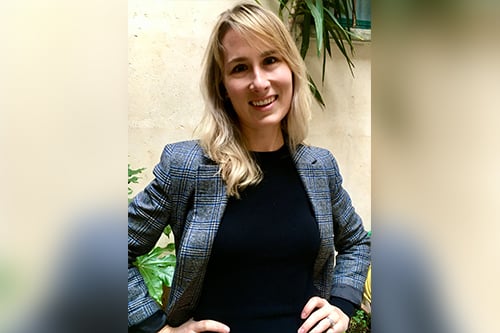

The following is an editorial by Alicja Grzadkowska, senior news editor at Insurance Business. To reach out to Alicja, email her at [email protected].
It’s not just tech behemoths who are invading the turf of insurers these days and giving the industry a run for its money.
In mid-November, General Motors (GM) launched its own insurance unit, OnStar Insurance, which is an insurance business powered by the technology of GM subsidiary and connected car services company OnStar. At the same time, GM unveiled a new insurance agency, OnStar Insurance Services, that will be the exclusive agent for OnStar Insurance. The partnership will be similar to some usage-based auto insurance arrangements that already exist in the marketplace, with customers who sign up for OnStar Insurance agreeing to have their driving habits tracked by the OnStar equipment installed on all GM vehicles. In turn, OnStar Insurance will reward safe driving behaviours via lowered insurance premiums.
The move by GM follows in the footsteps of other big-name firms stepping into the insurance ring, including Tesla, which unveiled Tesla Insurance in August 2019, after launching an insurance program in Australia and Hong Kong in 2016, and bringing it to North America in 2017. In fact, chief executive Elon Musk recently said in a quarterly earnings call that the insurance offshoot of Tesla could become one of the largest auto insurers in America. “Obviously, insurance is substantial. So, insurance could very well be, I don’t know, 30%, 40% of the value of the car business, frankly,” said Musk.
Amazon has likewise made inroads into insurance. In 2018, JPMorgan, the tech giant, and Berkshire Hathaway founded Boston-based Haven with the goal of overhauling healthcare benefits, improving workers’ health, and lowering costs. On the auto insurance side, Amazon made its entrance into the Indian insurance market in 2020 when it partnered with Acko General Insurance to sell auto insurance products for two- and four-wheeled vehicles in the country.
This year, Google also took some steps into insurance when, during the summer, the Alphabet-owned healthcare company Verily Life Sciences launched a new subsidiary called Coefficient Insurance Company, which will be backed by the commercial insurance unit of Swiss Re. When it comes to auto insurance, the tech behemoth is already well versed, as it has run an automotive insurance comparison site in the UK for several years now, and is licensed to sell insurance in the majority of US states.
Even Swedish furniture giant IKEA has become involved in the insurance business, launching a home contents insurance offering in Malaysia, underwritten by Etiqa General Insurance Bhd. The policy will cover the costs incurred due to damage to home furniture, renovation, as well as personal legal liability.
These developments have put the insurance industry on their toes, especially as these disruptors enter the sector with tons of tools, experience, and data at their disposal. For example, Amazon is a master of the online retail experience, and is transparent in its customer interactions by providing package tracking, straightforward returns policy, and customer reviews, now bringing those same benefits to insurance. Meanwhile, Tesla and GM as car manufacturers offer natural points of sale for potential insureds and can sell policies as an extension of the car-buying process – and IKEA can do the same as part of its furniture-selling interactions with customers.
Due to the technology installed in their vehicles, the car manufacturers likewise have a leg up in the insurance space since they don’t require drivers to purchase and install additional telematics devices that then have to link up to an insurer. In one word, these companies are ‘simplifying’ the insurance process – a task with which insurance incumbents have traditionally struggled.
But just how worried the insurance industry needs to be about the invasion of their turf remains to be seen. For one, commercial insurance hasn’t seen the same influx of competitors as auto and health insurance have, demonstrating that the business of commercial insurance is complex and requires deep insurance expertise for a reason. While there’s room to simplify the commercial insurance buying process, particularly for small businesses, insurers are already working on programs, partnerships, and projects that would accomplish exactly that – seen, for instance, through Aon’s commercial agreement with CoverWallet to meet SMBs’ insurance needs.
On the other hand, for brokers and agents as well as insurers, the moves by car manufacturers and technology companies in insurance hold valuable lessons. Insurance companies need to sharpen their focus on meeting the needs of consumers who want a frictionless buying experience, like the one provided by Amazon. If they instead make customers go through a lot of hoops, such as long claims processing and lots of paperwork, they are bucking the trend of the easy, quick, and frictionless service that consumers are looking for. This is a critical misstep considering that when it comes to selling insurance, agencies’ and brokers’ competitive advantage lies in how they engage with the client.
As industry disruptors continue to dip their toes into insurance, independent agencies and brokers can do a few things to stand out – primarily, by marketing their services and the value of working with them using none other than technology.
“They need to leverage technology so that they have the latest tools to drive their businesses and enable their customers to interact with them when and where that customer wants to interact them,” Insurance Technologies Corporation’s (ITC) CEO Laird Rixford recently told Insurance Business.
This year has already made it clear that in order to survive, the insurance industry needs to be faster on its feet in transforming all aspects of the insurance transaction, while focusing more heavily on the customer experience aspect. If GM, Amazon, and Tesla can act as motivators for the industry and spur brokers, agents, and insurers to evolve, their mark might end up being more positive than expected.
